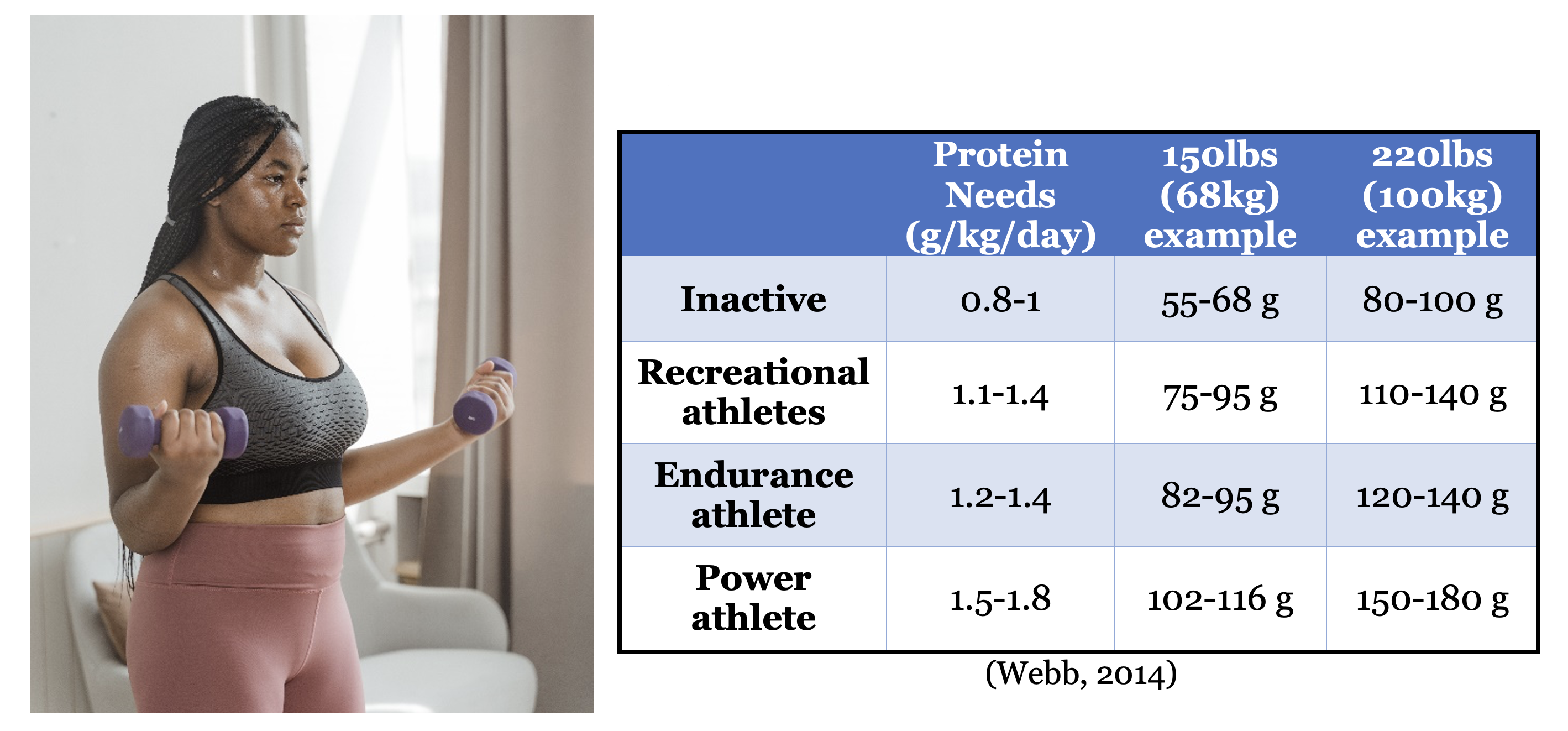What are your protein needs?
Aug 9 / CATEGORY: Nutrition
Estimated Read Time: 2 minutes and 30 seconds
In the past few years, the importance and quantity of protein in the diet has been debated. Read on to learn more.
Functions of protein
While we often relegate dietary protein to building muscle, it also is crucial in immune system defense, fluid balance, blood clotting, and nutrient transportation throughout the body. We know it is essential to ensure adequate protein intake, but how much do we need? How do activity level or fitness goals impact this number?
Protein needs for different populations
There are several misconceptions regarding protein consumption. Many people are actively trying to incorporate more protein into their diet, but 92% of Americans meet or exceed their recommended protein intake (Fulgoni, 2008). One common myth is that excessive protein intake can lead to kidney disease, but recent studies have proven this false (Poortmans & Dellalieux, 2000). However, excessive protein intake may cause a deficiency in other essential nutrients. Use the table below to determine your recommended protein consumption based on individual factors.
To find your weight in kilograms, divide your weight in pounds by 2.2.

Protein variety

Many people believe animal proteins are more beneficial than plant proteins, but research indicates that combining both is best for maintaining good health and longevity (Zhubi-Bakija et al., 2021). However, it’s crucial to choose protein sources carefully. Foods like sausage, fried chicken, and bacon should be eaten in moderation due to their high saturated fat content. If you need a quick and convenient source of protein, protein bars and shakes are good options. Here’s a list of some other popular protein options:
- – Meat, poultry, and eggs: lean cuts of beef, lamb, goat, pork loin, skinless chicken and turkey, quail, and duck
- – Fish and seafood: salmon, tuna, cod, shrimp, mackerel, lobster, catfish, crab
- – Low-fat or fat-free dairy foods: yogurt, milk, cheese, cottage cheese
- – Legumes: beans, split peas, lentils, soy products (tofu, tempeh, edamame)
Conclusion
For optimal satiety and sustained energy throughout the day, include a protein source in every meal in addition to carbohydrates and dietary fat. If you are engaging in strength training, consuming an extra protein source may be advantageous. Remember, moderation is key to reaching your health and fitness goals. Schedule a nutrition session with our registered dietitian here if you need help finding balance in your diet and would like one-on-one assistance.
This post was co-written by:
Jessie Furman, MS, RDN, LD/N and Nirali Patel
Jessie is a Registered Dietitian and Assistant Director for Fitness & Wellness at the University of Florida’s Department of Recreational Sports, where she does individual nutrition counseling and coaching with the UF community. Follow her on Instagram for more nutrition tidbits.
Nirali is a Program Assistant with Nutrition Services at the Department of Recreational Sports. She is a 3rd-year dietetics major with a minor in health promotion.
References
Fulgoni V. L., 3rd (2008). Current protein intake in America: analysis of the National Health and Nutrition Examination Survey, 2003-2004. The American journal of clinical nutrition, 87(5), 1554S–1557S. https://doi.org/10.1093/ajcn/87.5.1554S
Poortmans, J. R., & Dellalieux, O. (2000). Do regular high protein diets have potential health risks on kidney function in athletes?. International journal of sport nutrition and exercise metabolism, 10(1), 28–38. https://doi.org/10.1123/ijsnem.10.1.28
Webb, D., (2014). Athletes and protein intake. Today’s dietitian. https://www.todaysdietitian.com/newarchives/060114p22.shtml
Zhubi-Bakija, F., Bajraktari, G., Bytyçi, I., Mikhailidis, D. P., Henein, M. Y., Latkovskis, G., Rexhaj, Z., Zhubi, E., Banach, M., & International Lipid Expert Panel (ILEP) (2021). The impact of type of dietary protein, animal versus vegetable, in modifying cardiometabolic risk factors: A position paper from the International Lipid Expert Panel (ILEP). Clinical nutrition (Edinburgh, Scotland), 40(1), 255–276. https://doi.org/10.1016/j.clnu.2020.05.017
